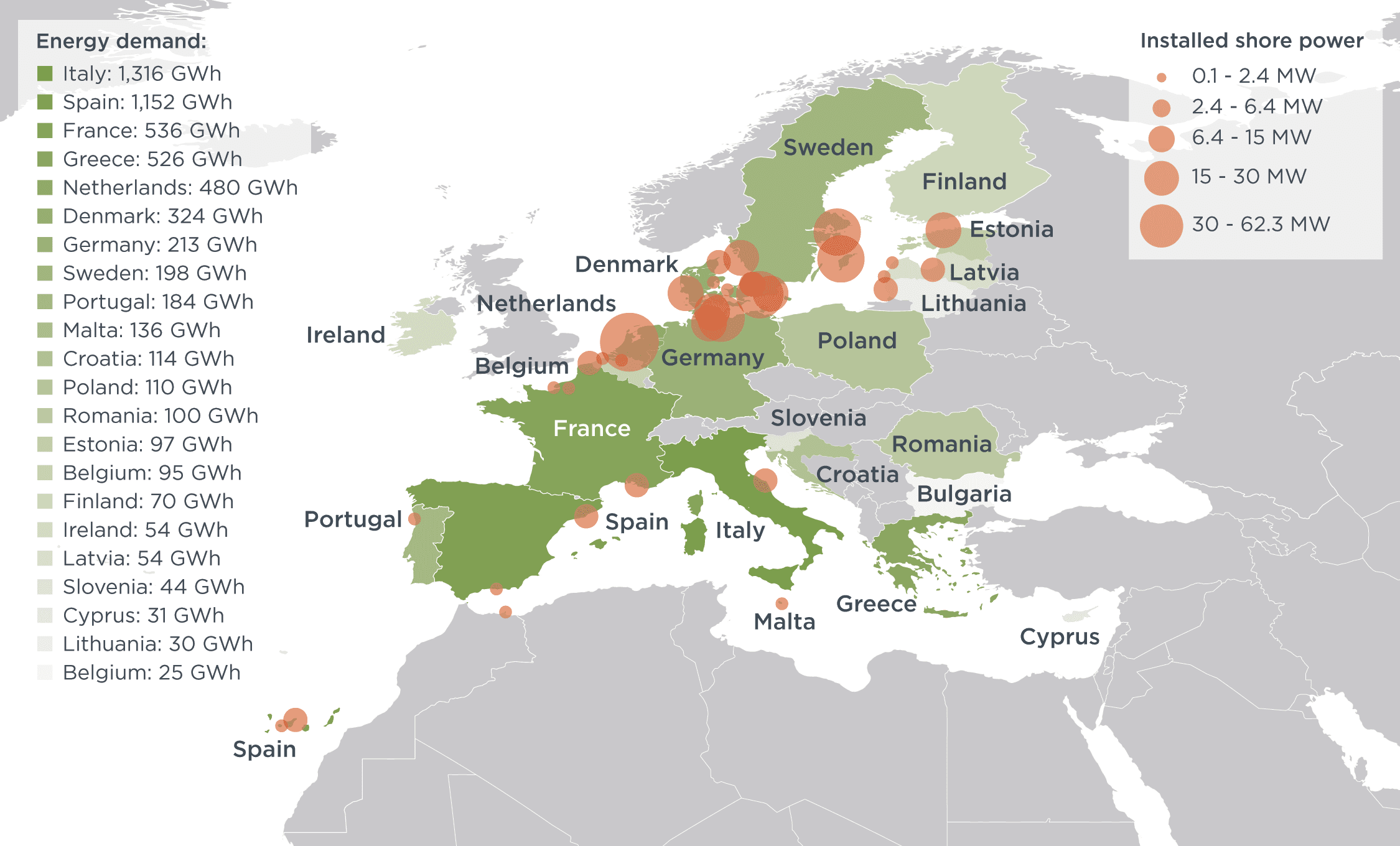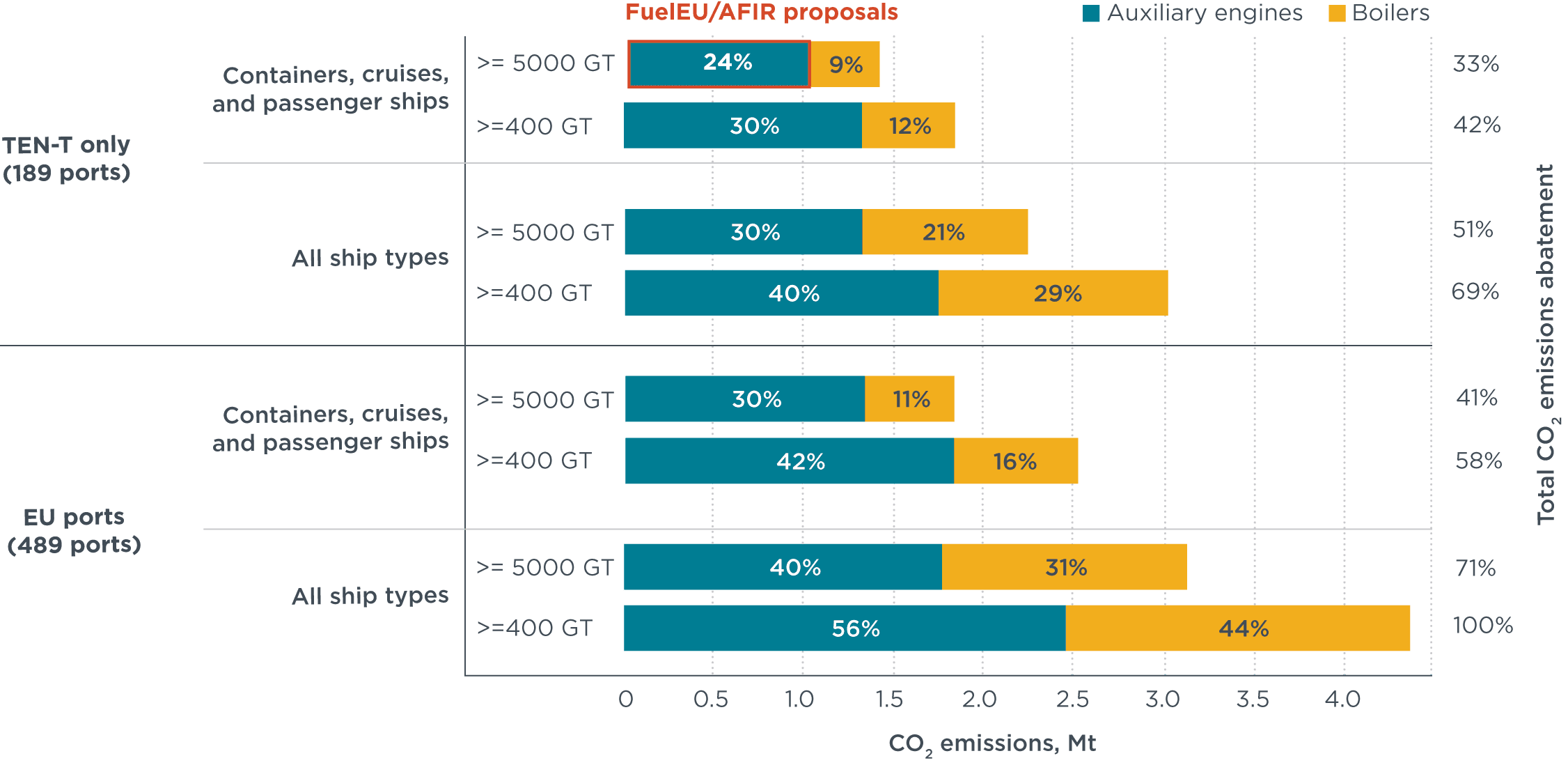Working Paper
Shore power needs and CO2 emissions reductions of ships in European Union ports: Meeting the ambitions of the FuelEU Maritime and AFIR
This study explores the role of shore power in decarbonizing maritime transportation in the European Union (EU) based on two recently adopted regulations: the FuelEU Maritime Regulation and the Alternative Fuels Infrastructure Regulation (AFIR). The FuelEU Maritime regulation requires that from January 1, 2030, container and passenger ships (including cruise ships) greater than or equal to 5,000 gross tonnage (GT) must connect to shore power in main EU ports in the trans-European transport network (TEN-T). The AFIR aims to regulate shore power supply and incentivize infrastructure development in TEN-T ports.
To provide insights for policymakers and EU Member States, this study estimates the energy needs of ships that berthed in 489 EU ports in 2019. It considers the installed shore power infrastructure in EU ports and calculates the additional power installations necessary to meet regulatory targets. Additionally, it estimates CO2 emissions from berthing ships in EU ports and assesses the effectiveness of the proposed regulations in reducing them.
About 15,700 ships spent more than 2 hours at-berth in the 489 major EU ports in 2019, demanding nearly 5.9 terawatt-hours of energy; nearly 70% of this energy demand came from the TEN-T network ports. The most energy-consuming ship types were tankers, passenger, and cruise ships (67% of the total at-berth energy demand), which were also key contributors of at-berth CO2 emissions.

Figure 2. At-berth energy demand of ships ≥400 GT by EU Member State and available existing power installations in EU ports.
Currently, 51 ports in 15 EU coastal Member States have shore power infrastructure, supplying 309 MW of power, 283 MW of which are intended for container, passenger, and cruise ships. We estimate the EU needs to triple or quadruple its installed shore power by 2030 to meet the current ambitions of the FuelEU Maritime regulation and AFIR.
This analysis demonstrates the current limitations of existing regulations in terms of CO2 emissions, which can also be used as an indicator for assessing the potential to reduce at-port air pollution. The current level of ambitions of the FuelEU Maritime regulation and AFIR will only lead to a 24% reduction in estimated annual 4.37 Mt at-berth CO2 emissions. The study concludes with policy recommendations to reduce at-berth CO2 emissions and meet the EU’s regulatory ambitions.
 Figure 6. Annual CO2 emission reduction potental under different policy scenarios.
Figure 6. Annual CO2 emission reduction potental under different policy scenarios.